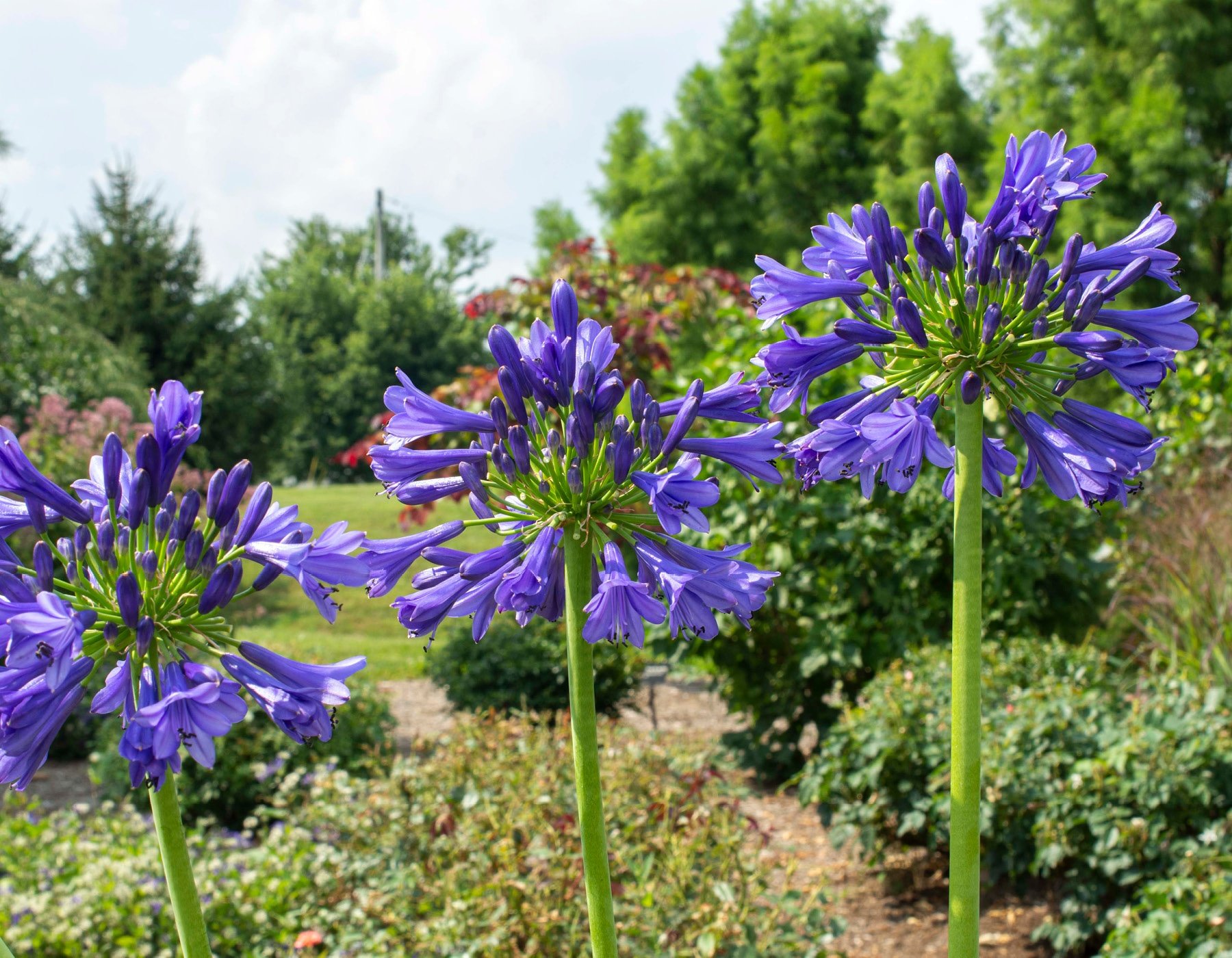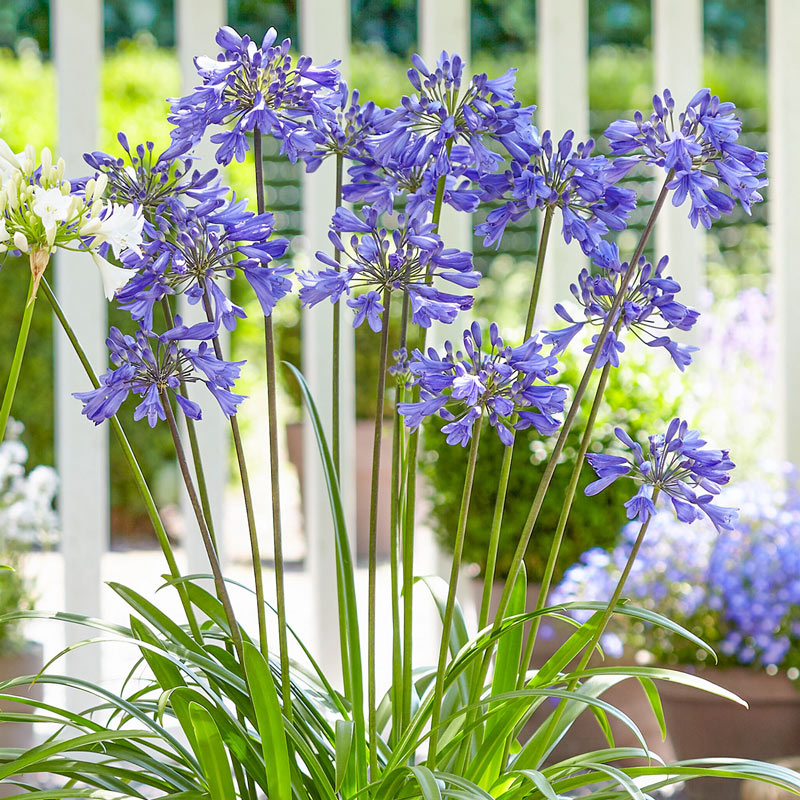Seasonal Agapanthus Care: Getting Ready For Wintertime and Summertime
Seasonal Agapanthus Care: Getting Ready For Wintertime and Summertime
Blog Article
Grasping the Art of Agapanthus Treatment: Crucial Actions for Healthy Growth and Vibrant Blossoms
In the world of cultivation, the growing of agapanthus stands as a fulfilling venture for those that seek to support these sophisticated blooming plants. From picking the ideal selection to understanding trimming methods, the journey in the direction of growing prospering agapanthus plants is complex and holds the crucial to opening the full possibility of these organic gems.

Selecting the Right Agapanthus Selection

When selecting the ideal Agapanthus range for your yard, consider elements such as environment viability, blossom shade, and development practice. Agapanthus, frequently referred to as Lily of the Nile or African lily, can be found in a variety of colors varying from tones of blue and purple to white. Select a flower color that complements your existing garden scheme to create a harmonious landscape. Furthermore, think about the climate in your area to make sure the Agapanthus selection you select can thrive in your specific conditions. Some ranges are more forgiving of cold temperatures, while others like warmer climates. Recognizing the development behavior of various Agapanthus selections is essential for proper positioning within your garden. Some selections have a clumping growth behavior, suitable for borders or containers, while others have a more spreading nature, ideal for ground cover or mass plantings. By very carefully evaluating these elements, you can choose the best Agapanthus variety to boost the beauty of your garden.
Perfect Planting Problems
Thinking about the ideal environmental requirements is vital for successful Agapanthus growing. Agapanthus flourishes in well-draining soil with a somewhat acidic to neutral pH level. When growing, select a location that gets full sunshine to partial shade. In hotter environments, offering some mid-day color can protect against scorching of the fallen leaves. Agapanthus plants are sensitive to cold temperature levels and must be shielded from frost throughout winter season months.
To ensure healthy and balanced growth and vivid blooms, plant Agapanthus light bulbs at a depth of concerning 2-4 inches and space them 8-12 inches apart. Including natural matter, such as garden compost, to the soil can boost drain and fertility, advertising robust origin growth. Mulching around the base of the plants assists maintain moisture and subdues weed development. Regular watering is vital, especially throughout the expanding period, to maintain the soil constantly damp but not saturated.
Watering and Fertilizing Tips
Keeping correct dampness degrees and offering necessary nutrients are crucial elements in the treatment regimen for Agapanthus plants. It is crucial to strike a balance when it comes to watering Agapanthus. If overwatered, these plants prefer continually moist dirt however are at risk to root rot. During the expanding season, water deeply as click here to find out more soon as a week, guaranteeing the dirt is well-draining to avoid waterlogging. In hotter climates or throughout durations of dry spell, more regular watering may be essential to keep the soil equally damp. Nonetheless, minimize watering in the winter to stop waterlogged conditions.
Fertilizing Agapanthus is important for advertising healthy and balanced development and respected blooms. Apply a balanced fertilizer, such as a 10-10-10 formula, in the very early spring as new growth arises. By following these watering and fertilizing tips, you can guarantee your Agapanthus plants flourish and create lively, resilient blossoms.
Pruning Methods for Agapanthus
Trimming Agapanthus plants at the appropriate times and with proper methods is vital for maintaining their health and wellness and promoting ideal growth and flowering. The perfect time to trim Agapanthus remains in late wintertime or very early spring before new growth emerges. Beginning by eliminating any type of yellowing or dead leaves near the base of the plant. Cut them as short as feasible without damaging the emerging shoots.
For flowered stems, wait up until the blossoms have withered and afterwards cut them back to look at this web-site the base. This not only cleans up the plant's appearance but likewise motivates the development of new flower buds. Deadheading spent blossoms can additionally reroute the plant's energy right into creating even more blooms instead than setting seeds. However, if you desire to accumulate seeds for proliferation, leave some blossoms to completely dry and fully grown on the plant.
Remember to utilize tidy, sharp devices to make exact cuts and decrease the danger of presenting illness. Agapanthus. Routine trimming will certainly assist keep your Agapanthus looking healthy and balanced and neat while guaranteeing a bountiful display of attractive blooms
Taking Care Of Common Insects and Conditions
After making sure appropriate pruning strategies for Agapanthus, it is vital to deal with typical pests and diseases that can affect the health and vitality of these plants. Agapanthus plants are generally sturdy but can still succumb to particular issues. One typical parasite that impacts Agapanthus is the Agapanthus gall midge. This tiny, orange fly lays its eggs in the vegetation, resulting in altered development and blossom buds that fall short to open. To combat this parasite, prune and destroy any affected plant components and consider utilizing insecticidal soap.
An additional common problem is fungal fallen leave area, which provides as dark lesions on the leaves. To avoid fungal diseases, make sure good air blood circulation around the plants, avoid overhead watering, and get rid of any kind of contaminated leaves promptly. Additionally, Agapanthus plants can experience root try this web-site rot if they are grown in badly draining pipes soil. To avoid this, plant Agapanthus in well-draining dirt and stay clear of overwatering. By being attentive and taking prompt action versus diseases and insects, you can help your Agapanthus plants grow and generate lively blooms.

Final Thought
To conclude, understanding the art of agapanthus treatment includes choosing the appropriate selection, providing optimal planting problems, appropriate watering and fertilizing, suitable trimming strategies, and resolving usual parasites and diseases. By complying with these necessary actions, you can ensure healthy and balanced growth and vivid flowers for your agapanthus plants. Bear in mind to regularly keep an eye on and maintain your plants to advertise their general wellness and long life.
To guarantee healthy development and vivid blossoms, plant Agapanthus light bulbs at a depth of about 2-4 inches and room them 8-12 inches apart. By following these watering and feeding pointers, you can ensure your Agapanthus plants prosper and produce vivid, resilient blooms.
One typical pest that impacts Agapanthus is the Agapanthus gall midge. In addition, Agapanthus plants can suffer from origin rot if they are grown in improperly draining pipes soil. By complying with these crucial steps, you can make sure healthy and balanced development and vivid blooms for your agapanthus plants.
Report this page